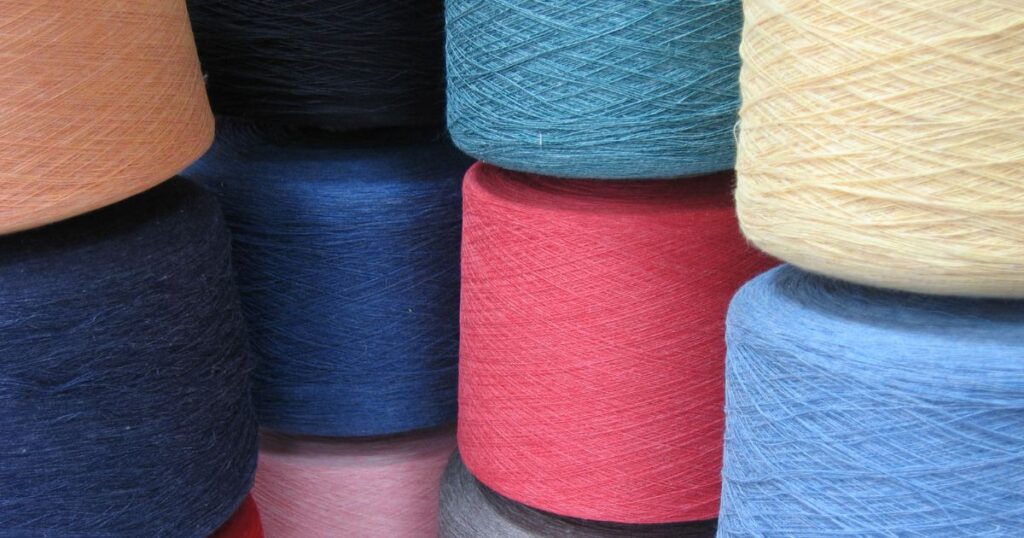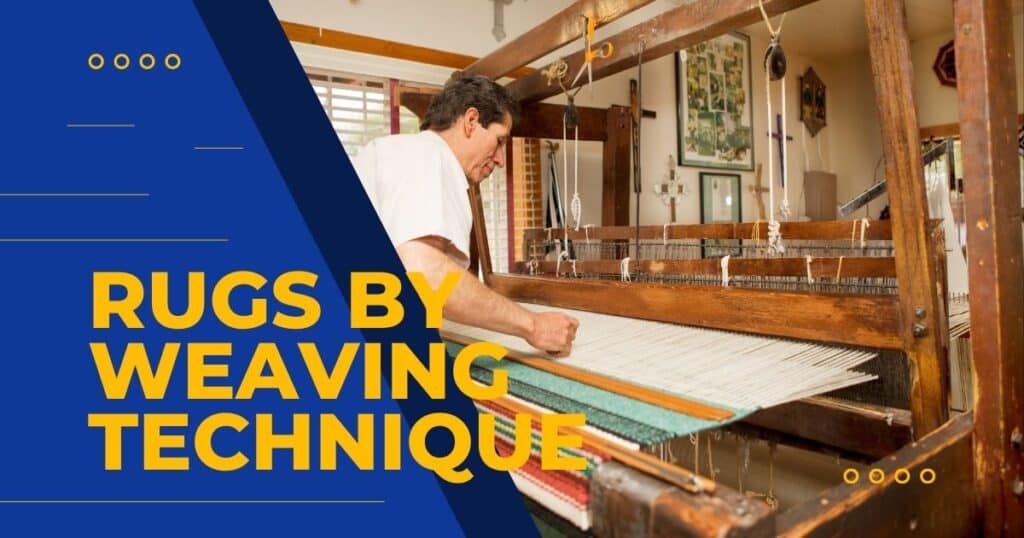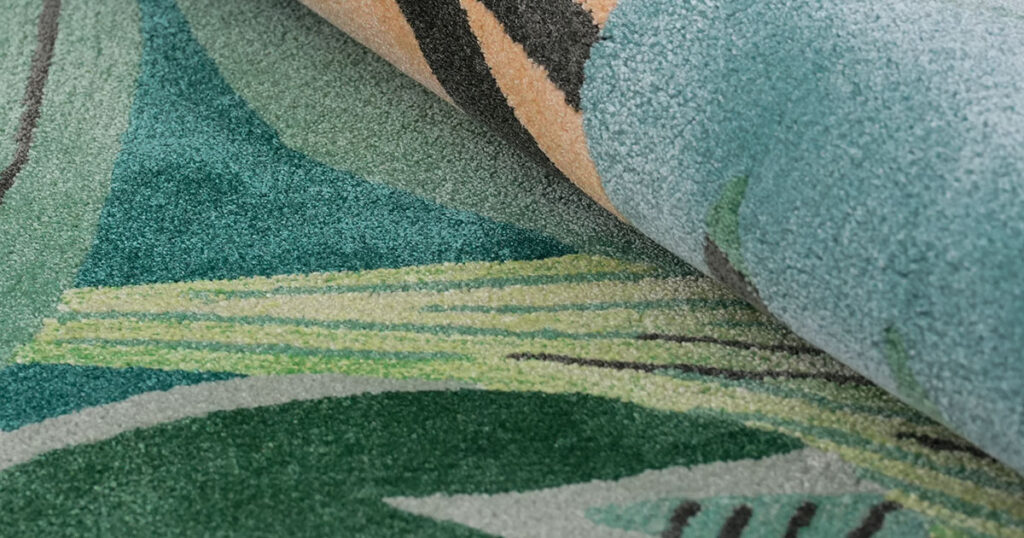Unlock the secrets of tufted rugs and find out why they are a popular choice for modern homes.
This post guides you through the history, unique characteristics, and various types of tufted rugs.
You’ll discover tips for choosing the perfect rug, understand its benefits and drawbacks, and learn maintenance hacks.
Whether you’re looking for affordability, durability, or style, this post has got you covered.
Don’t wait—start reading to transform your space today!
Introduction
Brief history of tufted rugs
Tufted rugs have a long history:
- The earliest known examples can date back to ancient Egypt and the Pazyryk carpet from 5th century BCE Persia.
- The modern tufting process originated in the United States in the 1930s with the development of mechanized tufting machines.
The growing popularity of tufted rugs in modern homes
- Tufted rugs have gained popularity in recent years due to their affordability, faster production times, and versatility in design compared to hand-knotted rugs.
- They are now commonly found in homes, hotels, and commercial spaces.
The importance of understanding advanced aspects of tufted rugs for informed buyers
- As an advanced buyer, understanding the intricacies of tufted rugs is crucial for making informed purchasing decisions based on factors such as quality, durability, and suitability for specific spaces.
What are Tufted Rugs?
Definition and basic characteristics
- Tufted rugs are created by punching strands of yarn through a backing material using a tufting gun or machine, forming a pile on one side.
- The back of the rug is then coated with latex to secure the tufts in place.
Comparison with other types of rugs
- Tufted rugs differ from hand-knotted rugs, which are made by tying individual knots, and woven rugs, which are created on a loom.
- Tufted rugs are generally less expensive and faster to produce than hand-knotted rugs but may not have the same level of durability or longevity.
Materials used in tufted rugs
- Natural fibers: Wool is a popular choice for its durability, softness, and texture retention.
Cotton, jute, and silk are also used. - Synthetic fibers: Polyester, nylon, acrylic, and polypropylene are common synthetic options, offering affordability and stain resistance.
- Blends: Combining natural and synthetic fibers can provide a balance of performance characteristics.
The Tufting Process
Explanation of the tufting technique
- Tufting involves using a tufting gun or machine to punch yarn through a backing material stretched on a frame.
- The yarn is then cut or looped to create the pile.
Types of tufting
- Hand-tufting: Artisans use a handheld tufting gun to create the rug.
- Machine-tufting: Automated machines are used for larger-scale production.
- Cut-pile tufting: Yarn loops are cut to create a plush, velvety surface.
- Loop-pile tufting: Yarn loops are left intact for a textured, durable surface.
- Cut-and-loop tufting: A combination of cut and looped piles creates patterns and textures.
The role of backing material
- Primary backing: The initial foundation fabric through which the yarn is punched.
- Secondary backing: Applied to the back of the rug for stability and protection.
- Backing materials: Woven cotton-polyester, recycled felt polyester, and non-slip backings are common choices, each with unique properties.
Finishing processes
- Shearing evens out the pile height.
- carving creates patterns and textures.
- binding secures the edges, latexing locks the tufts in place.
- mothproofing protects against insect damage.
In conclusion, understanding the history, materials, construction, and finishing processes of tufted rugs empowers advanced buyers to make well-informed decisions when selecting the perfect rug for their space.
Advantages of Tufted Rugs
Affordability compared to hand-knotted rugs
- Tufted rugs are generally more affordable than hand-knotted rugs due to the faster production process and use of machines.
- This makes them an attractive option for those on a budget who still want a high-quality, handcrafted look.
Durability and resilience
When made with high-quality wool, tufted rugs can be very durable:
- With the ability to withstand heavy foot traffic.
- Wool is naturally resilient and has excellent texture retention properties.
- With proper care, a tufted wool rug can last 10-15 years.
Wide range of designs and colors
- The tufting process allows for a great variety of designs and color combinations.
- Intricate patterns and custom designs are possible.
- Tufted rugs are available in both traditional and modern styles to suit different decor preferences.
Ease of maintenance and cleaning
- Tufted rugs are relatively easy to maintain with regular vacuuming and spot cleaning as needed.
- Professional cleaning every 12-18 months is recommended for a deeper clean.
- Wool tufted rugs tend to be easier to keep clean than synthetic versions.
Customization options for size, shape, and design
- One of the biggest advantages of tufted rugs is the ability to customize the size, shape, colors, and design to perfectly fit your space and style preferences.
- This allows you to get a truly unique rug tailored to your needs.
Disadvantages of Tufted Rugs
Shorter lifespan compared to hand-knotted rugs
- While durable, tufted rugs generally do not last as long as hand-knotted rugs, which can last for generations.
- Tufted rugs have an average lifespan of 3-20 years depending on quality and usage.
Potential for shedding and pilling
- Some tufted rugs, especially those made with lower-quality wool, may experience shedding or pilling of fibers.
- This is more common when the rug is new and should lessen over time with regular vacuuming.
Less intricate designs due to manufacturing limitations
- Although tufted rugs allow for a wide range of designs, they are not able to achieve the same level of intricacy and detail as hand-knotted rugs due to the nature of the tufting process.
Environmental concerns related to synthetic materials
- Tufted rugs made with synthetic materials like polyester or nylon are not as eco-friendly as natural fiber rugs.
- Synthetic rugs are harder to recycle and will end up in landfills once discarded.
Possible off-gassing and indoor air quality issues
- Some tufted rugs, particularly those with latex backing, can have a strong odor and off-gas chemicals when new.
- This smell usually dissipates over time but can be a concern for those with sensitivities.
Factors to Consider When Buying Tufted Rugs
Pile height and density
- High-pile vs. low-pile rugs: Tufted rugs come in a range of pile heights from low to high.
High-pile rugs are plush but harder to keep clean, while low-pile rugs are sleeker and easier to vacuum. - Density and its impact on durability: The denser the tufts, the more durable the rug will be.
Check the backing to see how close together the tufts are spaced.
Rug size and shape
- Proper sizing for different room layouts: Consider the size of your space and furniture placement when selecting a rug size.
The rug should be proportional to the room. - Custom sizing options: Tufted rugs can be customized to fit unusual room layouts or to serve as area rugs, runners, or wall-to-wall carpeting.
Color and pattern choices
- Color fastness and fading resistance: Look for tufted rugs made with color-fast dyes to prevent fading, especially if placing the rug in a sunny location.
- Coordinating with interior design styles: Choose a color and pattern that complements your existing decor style, whether traditional, modern, bohemian, etc.
Indoor vs. outdoor use
- Materials suitable for outdoor use: Tufted rugs made with synthetic fibers like polyester or polypropylene are better suited for outdoor use than wool rugs.
- Weather and UV resistance: Outdoor tufted rugs should be mold, mildew, and UV resistant to withstand the elements.
Look for rugs specifically labeled for outdoor use.
Budget considerations
- Price ranges for different quality levels: Hand-tufted rug prices vary based on size, materials, and design complexity.
Machine-made tufted rugs are less expensive than handcrafted options. - Long-term value and cost per square foot: While more affordable than hand-knotted rugs, investing in a higher-quality tufted rug may offer better long-term value and cost per square foot.
In summary, tufted rugs offer an appealing mix of affordability, durability, style options, and customization.
However, it’s important to weigh the potential drawbacks such as shedding, off-gassing, and shorter lifespan compared to hand-knotted rugs.
By considering factors like pile height, materials, size, and intended use, you can select a high-quality tufted rug that will beautify your space for years to come.
Caring for Tufted Rugs
Regular vacuuming and spot-cleaning
- Vacuum your tufted rug weekly to remove dirt and restore the fibers.
- Spot clean spills immediately with a damp cloth and mild detergent to prevent staining.
- Avoid rubbing, which can spread the stain.
Professional cleaning recommendations
- Dry cleaning vs. steam cleaning: Dry cleaning can remove surface dirt, while steam cleaning provides a deeper clean.
Choose the method based on the rug’s fibers, age, and condition. - Frequency based on traffic and usage: Have the rug professionally cleaned every 1-2 years, or more often in high-traffic areas.
Rotation and padding for even wear
- Rotate the rug 180 degrees every 6 months to promote even wear and prevent fading from sunlight.
- Use a quality rug pad to protect the rug and floor underneath.
Addressing common issues
- Fraying and shedding are normal when the rug is new and should lessen with regular vacuuming.
- Fading can be minimized by avoiding direct sunlight.
- For stubborn stains, consult a professional rug cleaner.
Storage and moth prevention
- When storing the rug, roll it tightly with moth repellent and wrap in breathable fabric.
- Avoid plastic, which can trap moisture.
- Regularly inspect for signs of moth activity, like holes or larvae.
Popular Styles and Trends in Tufted Rugs
Traditional and oriental-inspired designs
- Classic motifs and intricate patterns remain popular, often with updated colors.
- Persian and Turkish styles are frequently adapted for tufted rugs.
Modern and geometric patterns
- Bold, graphic designs and large-scale geometrics are on-trend for a contemporary look.
- These pair well with minimalist decor.
Textured and sculptured rugs
- Mixed pile heights, cut-and-loop constructions, and carved designs add visual and tactile interest.
- Textured rugs create a cozy, inviting feel.
Sustainable and eco-friendly options
- Recycled materials: Rugs made from recycled cotton, wool, or polyester appeal to eco-conscious consumers.
- Natural dyes and low-VOC adhesives: Plant-based dyes and non-toxic glues minimize the rug’s environmental impact.
Designer collaborations and limited-edition rugs
- Exclusive designs by artists and influencers generate buzz and allow for one-of-a-kind looks.
- Limited runs create a sense of urgency and collectibility.
Advanced Topics for Tufted Rug Enthusiasts
Understanding rug knot counts and densities
- Knot density, measured in knots per square inch (KPSI), affects the rug’s design intricacy and value.
- Higher counts allow for more detailed patterns but also increase production time.
Collecting and investing in tufted rugs
- Rare or artisan-made tufted rugs may appreciate in value over time.
- Factors like age, condition, materials, and design influence collectibility.
Tufted rugs as art pieces and wall hangings
- Tufted rugs can serve as decorative wall art in addition to floor coverings.
- Hanging the rug helps preserve it and creates a unique focal point.
Mixing and layering tufted rugs with other rug types
- Combine tufted rugs with flatweaves, hides, or sheepskins for an eclectic, layered look.
- Mix patterns and textures while keeping color palettes cohesive.
Conclusion
Recap of the key factors to consider when buying tufted rugs
- When selecting a tufted rug, evaluate the materials, pile height, density, size, shape, color, pattern, and intended use.
- Choose a style that complements your decor and fits your maintenance and budget requirements.
The importance of understanding advanced aspects for informed decision-making
- As an advanced buyer, being knowledgeable about tufted rug construction, care, trends, and value helps you make confident purchases.
- By investing in a high-quality tufted rug and properly maintaining it, you can enjoy its beauty and durability for many years.
In summary, tufted rugs offer a wide range of styles, textures, and customization options to suit any taste and interior.
With proper care and an understanding of advanced topics like knot density and collectibility, you can make informed decisions when buying and maintaining these versatile floor coverings.
Whether you prefer traditional designs or contemporary looks, tufted rugs provide both comfort and style to enhance your home.




